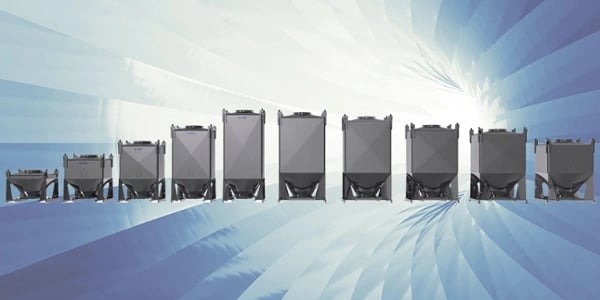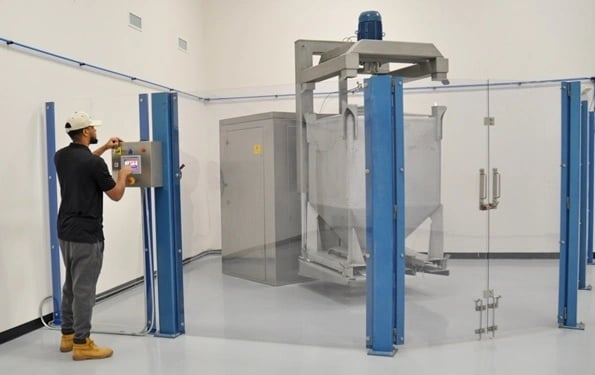When manufacturing products for the food, nutrition, bakery and chemical sectors, it is likely that you will need to blend a mix of powder ingredients. In the majority of applications, blending is the most important process to increase the value of the product. If you are handling a wide range of ingredients, some of these may pose an allergen risk and whilst several manufacturers are willing to make significant investments by installing the highest speed mixers and packing lines, it does not necessarily mean it will deliver a strong return on investment and long-term efficient solution.
The most important thing to consider is whether to batch or continuously manufacture. If you need to swap recipes on a regular basis or produce the same product day in day out, then your application will be better suited to certain blender types.
Do you need to blend a variety of products?
If you only have a requirement to manufacture one recipe in a large volume with no regular changes needed then you should continuously process with a fixed mixer coupled to the upstream and downstream processes. However, with more manufacturers finding that consumers are requesting recipe variety, changes need to be made quickly and efficiently. If you are finding that you need to change recipes and use varied ingredients regularly then batch processing would be the best way to manufacture.
Even if you are an experienced powder processing professional, technology moves on and the choice of mixers continues to expand. To help you select the right industrial mixer for your application, we have listed 5 key considerations for manufacturer’s who are looking to select an industrial powder mixer for blending as part of a batch processing programme.
The Characteristics of the Powder
Are you handling free-flowing powders with similar particle sizes? If this is the case and you know that your recipe will mix easily then a gentle blending programme will be best suited using either a tumble-blender or ribbon blender.
If you are handling sticky, cohesive powders and need them to mix homogeneously, you will need to work the mixture to force the particles to fold together. A blender that offers high shear capability in the form of intensifiers would be required. It is vital that the right amount of shear is applied to blend the particles. If this process is mismanaged then particle degradation and heat may build-up in the mixture.
The Size of the Batch Being Produced
Although large blenders have the ability to accommodate a full order size, it is likely that the load time and cleaning times will increase. Considerations need to be given to the time it takes to fill the blender by ripping and tipping 25kg sacks and then to discharge the mixed product to a packing line - you also have cleaning! Whilst the mixer is being loaded, emptied and cleaned it is not in use, leading to large amount of downtime.
If your customers require the same order sizes each time then a fixed mixer may work well until variable batch sizes are required. When using a tumble blender, you will be given the ability to blend a range of batch sizes in one blender as the mixing is done in the Intermediate Bulk Container (IBC). This gives you the option to choose the size of the container needed and reduce the amount of downtime.

Understand the True Mixing Time
Try not to be misled by the suggestion of a 4 minute blend time. The full end to end process time that includes all stages of blending from filling through to packing and cleaning needs to be taken into account. The time it takes to get your mixer back into operation and ready for the next batch could actually mean 2 hours to load and then 3 hours for packing.
Whilst IBC Blending might take a little longer to complete a full blend cycle, the formulation can be completed off-line. As the IBC is also removed from the blender and packed separately the mixer can be re loaded and set back into action. By running the filling, mixing and packing process steps in parallel means you save a significant amount of time, with the added benefit that the blender will not need to be cleaned.
How easy is it to clean your Industrial Mixer?
Some fixed blenders with multiple moving parts can lead to product loss. All fixed mixers will inevitably have some product left inside either the base of the mixer bowl or sticking to the sidewalls, paddles or bearings. Not only does this lead to large amounts of waste long term but also potential contamination across batches.
As mentioned above the true time of blending in an IBC will also include cleaning. If you need to take the fixed mixer apart, remove the contact parts and then perform a full wet wash with drying times factored in then the mixer will be out of action for a significant amount of time. Further considerations should be paid to:
- Safety - can operators safely and easily access all the corners and joints? What safety locking systems are incorporated?
- Convenience - are the paddles/shafts removable?
The fact remains that cleaning down and drying a fixed mixer takes a significant amount of time, it is labour intensive and wastes materials however with in-bin blending, the recipe is blended in the container, which can then be cleaned ‘off-line’. Once cleaned, IBCs can be returned to the manufacturing process to maintain an efficient process flow.

Risk of Cross-Contamination
As the number of ingredients used in recipes increases, so does the potential for allergens to be present. It is a challenge for manufacturers to perform recipe changeovers and clean-downs efficiently and effectively. As fixed mixers and in-line conveying systems are coupled, it can take a long time to clean parts and equipment between batches and then validate that the production line is actually clean.
If you are mixing various recipes on the same blender then there is a high risk of cross-contamination. To reduce any risks, some companies dedicate a single blender to recipes containing allergens. Whilst this can be an option if only one additional fixed mixer is needed, it is not good practice or economical if you need half a dozen!
IBC blending provides manufacturers with a simple, safe solution. The IBCs are used for one recipe and then cleaned (offline) before being reintroduced to the process. As there are no blender parts in contact with the product the same blender can be used again on a different batch.
Containers with butterfly valves can still experience mix segregation issues due to core flow. Cone Valve IBCs offer the best way to stop segregation as the product flows under mass-flow discharge meaning that all particles move down through the bin in unison.
Some things to remember when blending powders:
- It is possible to reduce the amount of time wasted in cleaning.
- Better efficiency at the blending process stage could increase output resulting in a higher number of batches being produced in a single shift.
- A tumble blender will reduce the number of operators required for cleaning.
- Using Matcon IBCs with integral Cone Valve technology means that no product is left in the container.
- It is possible to manufacture a wide range of recipes and batch sizes efficiently.
It is important that you are not selecting what appears to be the cheapest option in the short term. Remember not to focus on just the blend time and be wowed by fast mixers that will actually lead to large amounts of downtime and a poor ROI. Make sure you invest in a flexible manufacturing system which gives you a competitive advantage.
Final Thoughts
Download our guide to improving manufacturing flexibility by clicking on the button below, or visit our blending pillar resource page for more help and advice on common blending issues and how to overcome them.
Topics:
Blending